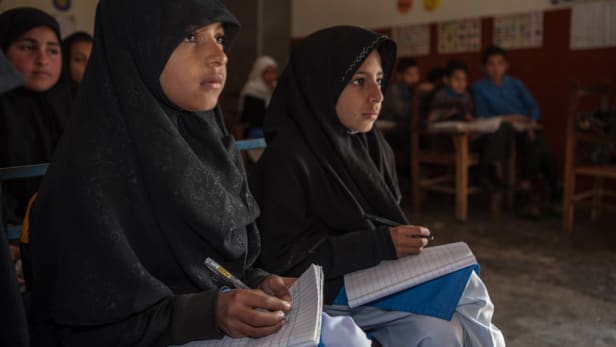By Barry Johnston
 |
| Schoolgirls in Pakistan's Punjab region. Photo by: Usman Ghani / DFID / CC BY |
Geneva is a place where big things are discussed. It’s where the world’s top diplomats gather to talk war and peace. It’s where treaties are signed and conventions ratified. If the walls of the U.N. buildings could speak they would tell stories of hard negotiations and momentous agreements.
By chance, a small group of statisticians and technocrats will gather there this week. The purpose of the meeting — although on the surface obscure — will have far reaching implications for the lives of millions of young girls and the societies where they live. One hopes the history of their surroundings will have an influence.
The snappily titled Inter-agency and Expert Group on Sustainable Development Goals Indicators (or the IEAG-SDG) was created to develop an indicator framework for the goals and targets of the post-2015 development agenda at the global level. Having met a number of times, the group is now getting to the business end of things — or in diplomatic speak, engaging in a process of “refinement.”
Their task is to ensure the indicators they develop properly measure the full promise of the goals and targets agreed by the U.N. last year. While this is a highly complex and technical task, it is also deeply political. What gets measured is more likely to get done. So the process merits close scrutiny.
A case in point — one of primary concern for the Malala Fund — is the group’s efforts to measure the new global goal on education. SDG 4.1 commits, by 2030, to “ensure that all girls and boys complete free, equitable and quality primary and secondary education…”
But now take a look at what is proposed as an indicator: “Percentage of children/young people in grades two and three at the end of primary school (elementary) and at the end of lower secondary (junior high) achieving at least a minimum proficiency level in reading and mathematics.”
Spot the difference? For a start, it does not measure children out of school. It also completely ignores children in upper secondary school (high school). And it’s totally silent on the cost of education.
These gaps matter, and they matter most for those currently most in need of education. As our founder Malala Yousafzai has said, “If we say girls count, then we must count girls.” By adopting the framework in its present form, millions of girls will be made invisible.
In developing countries, girls barely complete basic education. In Pakistan girls spend on average only five years in education. Across sub-Saharan Africa, less than 20 percent of girls enroll in lower secondary school, and there are huge discrepancies between rich and poor. At current rates of progress, it will be 100 years before the poorest girls in sub-Saharan Africa have access to 12 years of education.
Over the past months, we’ve been making this case to members of the IEAG. After managing to get agreement on the global framework, they are understandably loathe to open the whole thing up for renegotiation. But that is not what we are proposing. Rather, we are calling on members to refine the indicators to properly measure the original commitment.
In order to avoid this lowering of the ambition articulated in SDG 4.1 and promote national and global efforts to provide even the poorest girls with a full 12 years of education, Malala Fund is calling for the indicators to capture progress at primary, lower secondary and upper secondary levels and to include measurement of cost, quality and completion of schooling.
Happily, there is a growing number of countries within the IEAG supporting these positions, and members will come to this meeting with concrete proposals for improvements. We’re urging those attending to draw inspiration from their surroundings and to aim for an outcome that meets the full promise of the SDGs. For millions of girls around the world, at the risk of remaining invisible, that agreement may be as important as any other reached in the negotiating rooms of Geneva.

No comments:
Post a Comment